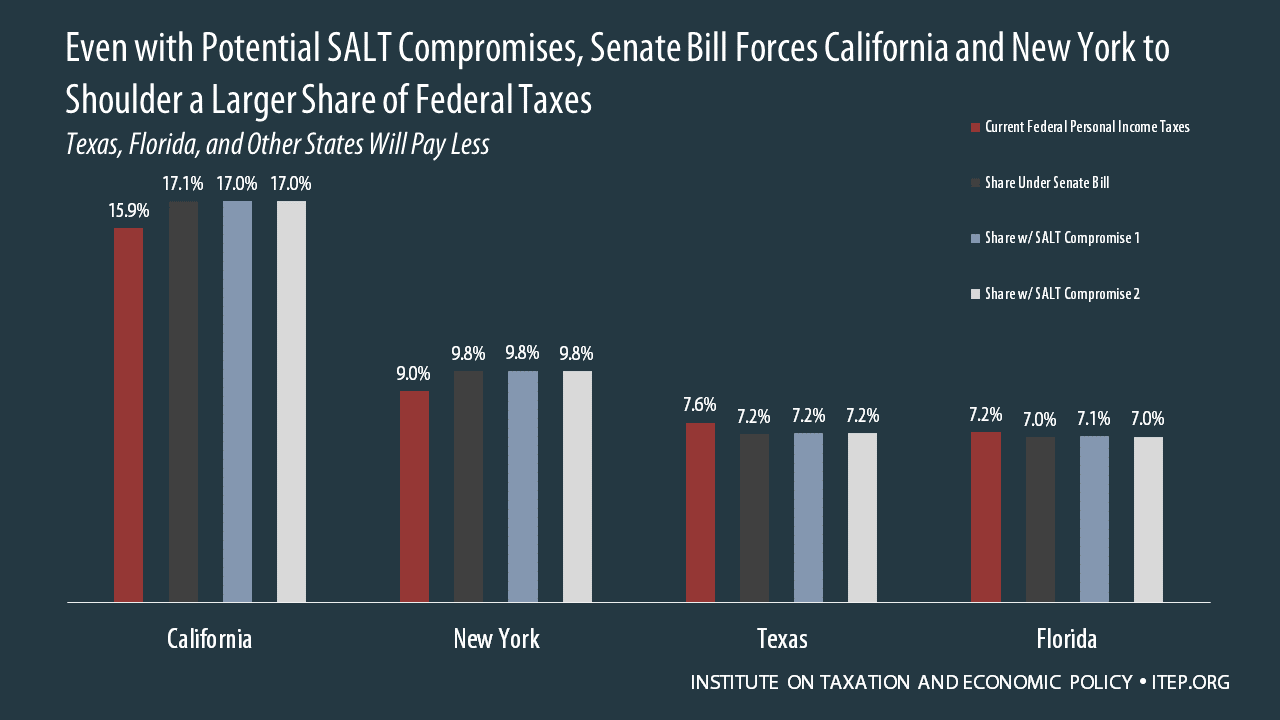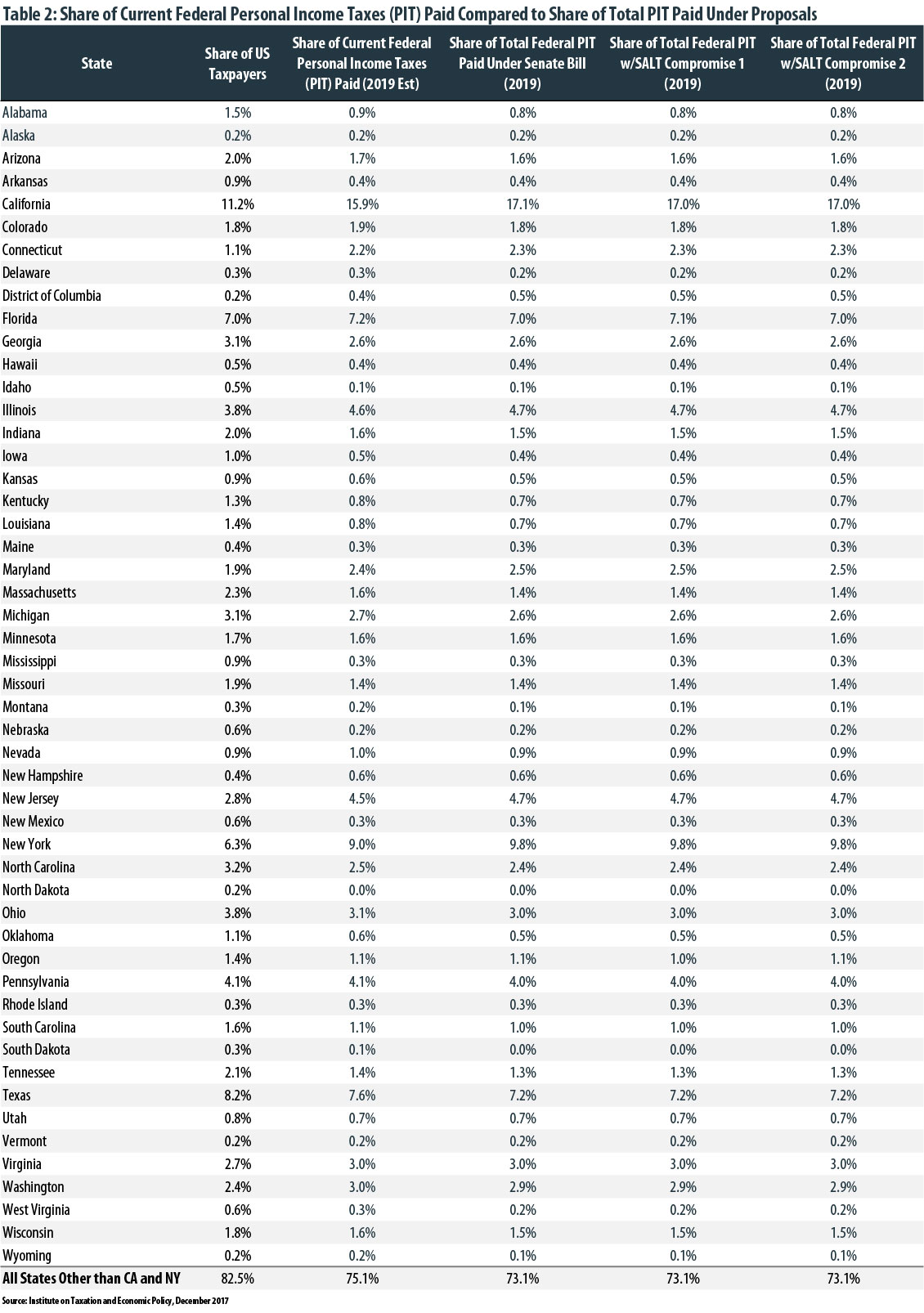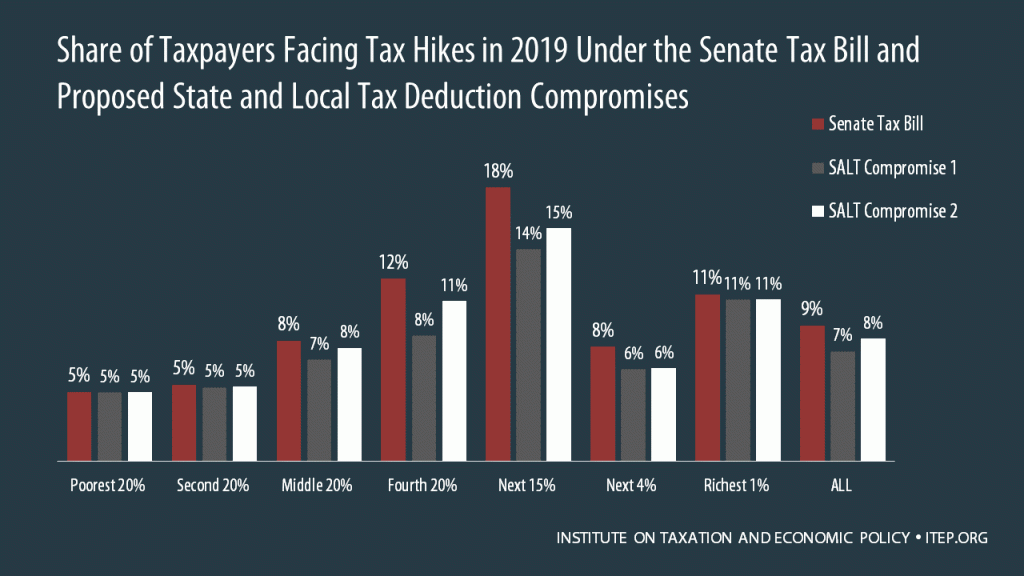Residents of California and New York pay a large amount of the nation’s federal personal income taxes relative to their share of the population. As illustrated by the table below, the Senate tax bill would increase the share of total federal personal income taxes paid by both states. At the same time, it would reduce total federal personal income taxes paid by Florida and Texas, which would receive a larger share of the tax cuts relative to what they pay to the federal government today.
The tax bills passed by the House and Senate cut taxes for some households and raise taxes for others. Residents of states with higher state and local taxes, such as California and New York, are more likely to face tax increases than residents of other states because the bills severely restrict the ability of taxpayers to deduct state and local taxes on their federal tax returns. Both bills allow taxpayers to deduct up to $10,000 in property taxes, with no deduction for state and local income taxes.
Californians will make up 11.2 percent of U.S. taxpayers in 2019, but its residents would pay 15.5 percent of the federal personal income taxes that year under current law. In 2019, California residents would receive just 7.6 percent of the personal income tax cuts under the Senate bill as passed (Table 1) and their share of federal income taxes paid would increase to 17.1 percent (Table 2).
Another ITEP blog post describes two potential “compromises” that lawmakers claim would help taxpayers in high-taxed states such as California. But ITEP estimates show that these compromises would not make much of a difference. The share of personal income tax cuts that California residents would receive from the Senate tax plan would increase from 7.6 percent to about 8 percent if either version of the compromise is added to the plan yet their share of overall federal income taxes paid would still climb to 17 percent.
New Yorkers will make up 6.3 percent of U.S. taxpayers in 2019 but would pay 8.8 percent of the federal personal income taxes that year under current law. In 2019 residents of this state would receive 2.9 percent of the personal income tax cuts in the state and 3.1 percent if either of the compromises is included (Table 1). Their share of total federal personal income taxes paid would climb to 9.8 percent under ever scenario (Table 2).
However, some lower-taxed states would be treated much better. Florida makes up 7 percent of the nation’s taxpayers, and its residents pay about the same share of federal personal income taxes under current law. But its residents would receive a greater share of the total personal income tax cuts under the Senate tax bill, regardless of whether either of the compromises are added to the plan. Under the Senate bill as passed, Florida would receive 8.8 percent of the personal income tax cuts. Under the two compromises it would receive 8.4 percent or 8.5 percent and their total share of federal income taxes paid would decline.
Texas is treated even better. It will account for 8.2 percent of the nation’s taxpayers in 2019, but its residents will pay just 7.6 percent of federal personal income taxes that year under current law. But Texas residents would receive about 11 percent of the personal income tax cuts under the Senate bill as passed and would receive 10.6 percent or 10.8 percent if one of the compromises is added to the plan. Their total share of federal personal income taxes paid would decline to 7.2 percent under all scenarios.
In other words, the Senate tax bill, with or without either of the compromises that could be added to it, would shift personal income taxes away from Florida and Texas to states like California and New York, which are already paying a high share relative to their populations.









